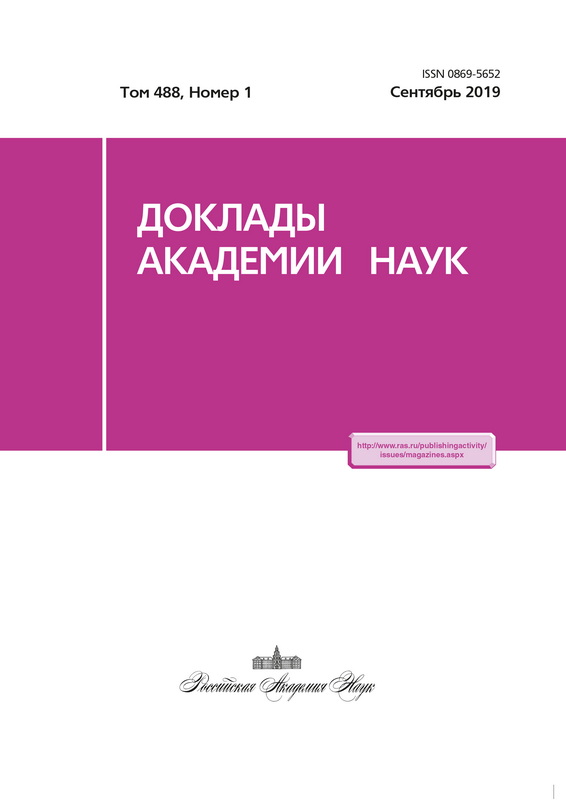Activation of Su(Hw) controlled genes is associated with increase in GAF binding
- Authors: Elizar`ev P.V.1,2, Chetverina D.A.1, Melnikova L.S.1, Srivastava A.3, Mishra R.K.3, Golovnin A.K.1, Georgiev P.G.1, Erokhin M.M.1
-
Affiliations:
- Institute of Gene Biology of the Russian Academy of Sciences
- Laboratory of Chromatin Biology, Max Planck Institute of Biochemistry
- CSIR-Centre for Cellular and Molecular Biology
- Issue: Vol 488, No 1 (2019)
- Pages: 99-102
- Section: Biochemistry, biophysics, molecular biology
- URL: https://journals.eco-vector.com/0869-5652/article/view/16220
- DOI: https://doi.org/10.31857/S0869-5652488199-102
- ID: 16220
Cite item
Full Text
Abstract
The interaction of the GAF protein with the promoters of neuron-specific genes during activation and repression of transcription has been studied. We have shown that while the Su(Hw) protein remains stably associated with the promoters of these genes at different transcriptional state, the GAF protein level is significantly higher when transcription is activated.
About the authors
P. V. Elizar`ev
Institute of Gene Biology of the Russian Academy of Sciences; Laboratory of Chromatin Biology, Max Planck Institute of Biochemistry
Email: yermaxbio@yandex.ru
Russian Federation, 34/5, Vavilova str., Moscow, 119334; 18, am Klopferspitz, Martinsried, Germany, 82152
D. A. Chetverina
Institute of Gene Biology of the Russian Academy of Sciences
Email: yermaxbio@yandex.ru
Russian Federation, 34/5, Vavilova str., Moscow, 119334
L. S. Melnikova
Institute of Gene Biology of the Russian Academy of Sciences
Email: yermaxbio@yandex.ru
Russian Federation, 34/5, Vavilova str., Moscow, 119334
Avinash Srivastava
CSIR-Centre for Cellular and Molecular Biology
Email: yermaxbio@yandex.ru
India, Habsiguda, Uppal Road, Hyderabad, Telangana, 500 007
Rakesh K. Mishra
CSIR-Centre for Cellular and Molecular Biology
Email: yermaxbio@yandex.ru
India, Habsiguda, Uppal Road, Hyderabad, Telangana, 500 007
A. K. Golovnin
Institute of Gene Biology of the Russian Academy of Sciences
Email: yermaxbio@yandex.ru
Russian Federation, 34/5, Vavilova str., Moscow, 119334
P. G. Georgiev
Institute of Gene Biology of the Russian Academy of Sciences
Email: yermaxbio@yandex.ru
Academician of the Russian Academy of Sciences
Russian Federation, 34/5, Vavilova str., Moscow, 119334M. M. Erokhin
Institute of Gene Biology of the Russian Academy of Sciences
Author for correspondence.
Email: yermaxbio@yandex.ru
Russian Federation, 34/5, Vavilova str., Moscow, 119334
References
- Chetverina D., Aoki T., Erokhin M., Georgiev P., Schedl P. // Bioessays. 2014. V. 36. № 2. P. 163-172.
- Chetverina D., Fujioka M., Erokhin M., Georgiev P., Jaynes J.B., Schedl P. // Bioessays. 2017. V. 39. № 3.
- Schwartz Y.B., Cavalli G. // Genetics. 2017. V. 205. № 1. P. 5-24.
- Cubeñas-Potts C., Corces V.G. // FEBS Lett. 2015. V. 589. № 20. Pt A. P. 2923-2930.
- Soshnev A.A., Baxley R.M., Manak J.R., Tan K., Geyer, P.K. // Development. 2013. V. 140. № 17. P. 3613-3623.
- Baxley R.M., Soshnev A.A., Koryakov D.E., Zhimulev I.F., Geyer P.K. // Dev Biol. 2011. V. 356. № 2. P. 398-410.
- Melnikova L., Elizar’ev P., Erokhin M., Molodina V., Chetverina D., Kostyuchenko M., Georgiev P., Golovnin A. // Sci Rep. 2019. V. 9. № 1. P. 5314.
- Srivastava A., Kumar A.S., Mishra R.K. // Cell Mol Life Sci. 2018. V. 75. № 4. P. 623-633.
- Lomaev D., Mikhailova A., Erokhin M., Shaposhnikov A.V., Moresco J.J., Blokhina T., Wolle D., Aoki T., Ryabykh V., Yates J.R.3rd., Shidlovskii Y.V., Georgiev P., Schedl P., Chetverina D. // PLoS One. 2017. V. 12. № 3. P. e0173602.
- Nakayama T., Shimojima T., Hirose S. // Development. 2012. V. 139. № 24. P. 4582-4590.
Supplementary files





